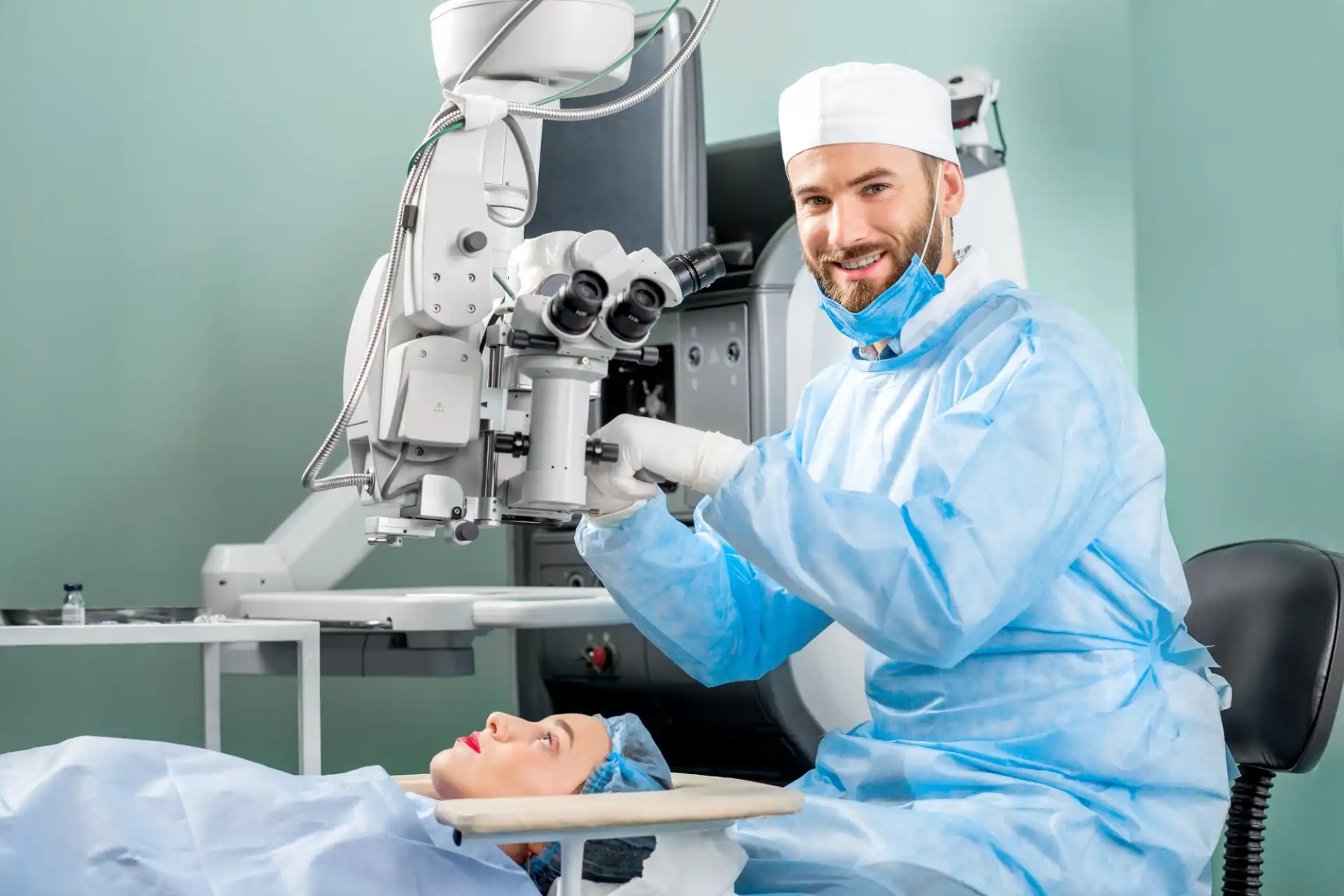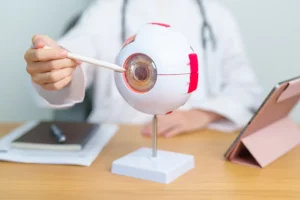What You Need to Know About Vision Correction Options
Corrective eye surgery has revolutionized the way we address vision problems, offering long-term solutions for conditions like nearsightedness, farsightedness, astigmatism, and presbyopia. These surgical procedures aim to reduce or eliminate the need for glasses or contact lenses, improving quality of life for millions worldwide.
In this guide, we’ll cover the basics of corrective eye surgery, including types of procedures, who’s a candidate, and what to expect during and after surgery.
What Is Corrective Eye Surgery?
Corrective eye surgery involves reshaping the cornea—the clear front surface of the eye—or implanting devices to improve how light is focused on the retina. These procedures are typically performed by ophthalmologists using advanced laser or surgical technology.
Common goals include:
- Correcting refractive errors (e.g., nearsightedness, farsightedness, astigmatism).
- Enhancing vision clarity and reducing dependency on glasses or contacts.
Types of Corrective Eye Surgery
1. LASIK (Laser-Assisted In Situ Keratomileusis)
- What It Does: Reshapes the cornea using a laser to correct nearsightedness, farsightedness, or astigmatism.
- Procedure: A thin flap is created in the cornea, the underlying tissue is reshaped with a laser, and the flap is repositioned.
- Recovery: Quick, with most patients resuming normal activities within 24 hours.
2. PRK (Photorefractive Keratectomy)
- What It Does: Similar to LASIK but removes the outer layer of the cornea instead of creating a flap.
- Procedure: The corneal surface is reshaped with a laser.
- Recovery: Longer than LASIK, with vision improvements over several weeks.
3. SMILE (Small Incision Lenticule Extraction)
- What It Does: A minimally invasive option for correcting nearsightedness.
- Procedure: A laser creates a small disc-shaped piece of tissue, which is removed through a tiny incision.
- Recovery: Similar to LASIK but with less risk of dry eye.
4. RLE (Refractive Lens Exchange)
- What It Does: Replaces the eye’s natural lens with an artificial intraocular lens (IOL) to correct presbyopia or extreme refractive errors.
- Procedure: Similar to cataract surgery.
- Recovery: Vision stabilizes within a few weeks.
5. Implantable Contact Lenses (ICL)
- What It Does: A removable lens is implanted inside the eye to correct vision without reshaping the cornea.
- Procedure: A small incision is made, and the lens is inserted in front of the eye’s natural lens.
- Recovery: Quick, with minimal downtime.
6. LASEK (Laser Epithelial Keratomileusis)
- What It Does: A hybrid of LASIK and PRK, ideal for thin corneas.
- Procedure: The outer layer of the cornea is loosened and replaced after the underlying tissue is reshaped.
- Recovery: Slightly longer than LASIK but shorter than PRK.
Who Is a Candidate for Corrective Eye Surgery?
You may be a good candidate if you:
- Are over 18 years old with a stable prescription for at least one year.
- Have healthy eyes free of conditions like severe dry eye or keratoconus.
- Want to reduce dependence on glasses or contact lenses.
You may not be eligible if you:
- Are pregnant or nursing (hormonal changes can affect vision).
- Have certain medical conditions like autoimmune diseases.
- Have thin corneas or other structural eye issues (may limit LASIK eligibility but not PRK or SMILE).
Preparing for Corrective Eye Surgery
- Consultation:
- Your eye doctor will perform a comprehensive exam to assess your corneal thickness, prescription, and overall eye health.
- Stop Wearing Contact Lenses:
- Discontinue contact lens use for 1-2 weeks before your consultation and surgery, as they can alter the shape of your cornea.
- Discuss Expectations:
- Understand the potential risks, benefits, and limitations of the procedure you’re considering.
What to Expect During Surgery
- Duration: Most procedures take 10-30 minutes.
- Anesthesia: Numbing eye drops are used to ensure a painless experience.
- Post-Surgery: Vision may be blurry initially, but it improves significantly within days to weeks, depending on the procedure.
Recovery and Aftercare
- Rest: Avoid strenuous activities and protect your eyes from rubbing or accidental bumps.
- Follow-Up Visits: Attend all post-surgery check-ups to monitor healing and ensure proper results.
- Eye Drops: Use prescribed drops to prevent infection, reduce inflammation, and keep your eyes lubricated.
- Avoid Certain Activities: Stay away from swimming, hot tubs, and environments with excessive dust or debris for the first few weeks.
Potential Risks and Complications
While corrective eye surgery is generally safe, potential risks include:
- Dry eyes
- Glare or halos around lights
- Under-correction or over-correction
- Rarely, infection or vision regression
Your surgeon will discuss these risks in detail and provide strategies to minimize them.
Benefits of Corrective Eye Surgery
- Improved Vision: Most patients achieve 20/20 vision or better.
- Reduced Dependence on Glasses or Contacts: Many people no longer need corrective lenses after surgery.
- Quick Results: Significant vision improvements are often noticeable within days.
- Long-Term Solution: Results are typically permanent, although age-related changes may still occur.
FAQs About Corrective Eye Surgery
Q: How long do results last?
A: Results are typically permanent, but presbyopia or other age-related changes may affect vision over time.
Q: Is corrective eye surgery painful?
A: No, the procedure is painless thanks to numbing drops, though mild discomfort may occur during recovery.
Q: How soon can I return to work?
A: Many patients return to work within 1-3 days, depending on the procedure and their job requirements.
Conclusion: A Clearer Future Awaits
Corrective eye surgery offers a life-changing opportunity to enhance your vision and regain independence from glasses or contact lenses. By understanding your options and consulting with a qualified eye care professional, you can determine the best procedure for your needs.
At Bridgemill Eyecare, we’re here to guide you through every step of your journey to better vision. Schedule a consultation today to learn more about corrective eye surgery and take the first step toward a clearer, brighter future.





